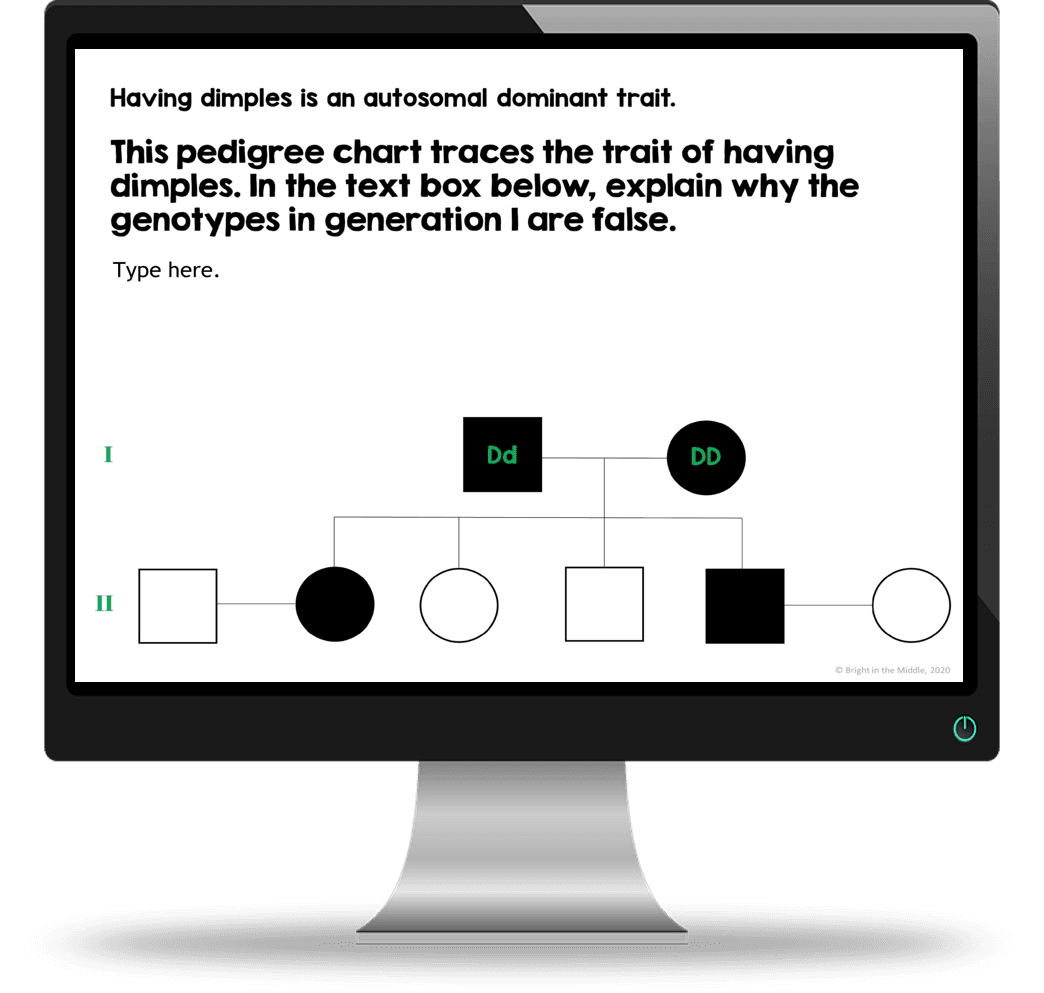Do you teach middle school science? Are you looking for some must-have science activities for secondary students?
I have loads of ideas for your middle school science classroom, including the ones in this post. Need more ideas to engage and motivate your middle school science students to bring the WOW Factor to your science classroom!
Here are some activities to add to your lesson plans!
Science Activities for Secondary Students
1. Interactive Lessons
Interactive lessons are your one-stop-shop. These lessons include BOTH a lesson and practice. They are my absolute favorite! They can be used in so many ways including for distance learning, individual learning, direct instruction, science centers, enrichment/tutoring, and for ELL students.
So what exactly are they? Interactive lessons are engaging lessons that can be used in Google Slides™ or PPT, by individual students or direct instruction from the teacher.

The lessons, aligned directly with middle school content, are set up in small chunks so they are easy to follow and they decrease the cognitive load. They are set up so that students first learn a little bit of content, and then, practice that content. This process continues throughout the lesson.
For example, within this simple machines lesson, students first learn what a lever is, then review what a fulcrum is. Afterward, the lesson lists examples of levers and the three classes of levers, then students have a chance to practice their skills by a drag and drop activity, write in the text box activity, and drag and drop lever activity.
Students are able to FIRST digest small chunks of information, process it, and practice before moving on. This is PERFECT for the traditional classroom as well as virtual learning. They can be great for direct instruction with student volunteers to answer the interactive questions.
Guided Notes are included!
2. Science Stations
You must get your students up and moving. Imagine if you sat down all day. Do you get tired when you are sitting for just 20 minutes? I know I do.
Stations are a great way to get that blood flowing in your students, keep their learning within their attention spans, and is the perfect thing to add to your science activities for secondary students!
So, what are some science stations you can try?
- “Read it” stations
- Observation stations
- Experimentation stations
- Interactive lesson stations (yep, they are awesome!)
- Art stations
- “Model it” stations
- Measurement stations
- Data stations
- Classifying/sorting stations
- Vocabulary stations
3. Writing Prompts
Writing prompts are fantastic! They are a great way to increase scientific literacy, help your students understand scientific concepts, and yes, it can be fun!
Why use writing prompts?:
- Writing in the science classroom will increase your students’ scientific literacy.
- You will spark creativity in your students.
- You could address misconceptions.
- Writing on a regular basis could improve writing skills.
- Students will increase their science content knowledge.
- and more!
How can you use writing prompts:
- Warm-ups
- “I’m Finished” Stations
- Science Stations
- Quiz/Test Questions
- Extra Credit
- Review
- and more!
Here are collection of writing prompts here that you can keep on hand.
Here are some examples of prompts you can use in your classroom:
- For motion: “Explain the difference between a diagonal line and a horizontal line on a distance-time graph. Give examples of each.”
- For energy: “A pulley and a lever just met for the first time. What do they talk about?”
- You can also check out the Earth Layers writing prompts.
Not happy with these or looking for something different? I’m not mad at you! We live in a time where pulling up a writing prompt is easy with AI! Just ask for a writing prompt for whatever topic you are teaching and see what it comes up with!
Writing prompts are a fun activity to add to your lesson plans!

4. Videos
I love videos! They are a perfect addition to those science activities for secondary students. There are just times when the kids brains are absolutely fried. They are over it, but learning still needs to happen. Watching videos is a great way for students to “sit-and-get” without using as much brain power, but they are still learning.
Videos can be powerful!
Some of my favorite videos for students to watch in middle school are:
- Bill Nye
- Study Jams
- Amoeba Sisters
- Crash Course Kids
- Steve Spangler
- Science Bob
- National Geographic Kids
- Mark Rober
5. STEM Activities
Need something else to add to your science activities for secondary students collection? Don’t leave out STEM Activities. STEM stands for Science, Technology, Engineering, and Math. Around North Carolina, it’s labeled as “Strategies that Engage Minds”.
STEM Activities are those that provide hands-on learning, challenges that promote problem-solving and critical thinking. They also spark innovation and creativity!
Looking for some STEM Activities to try in your classroom? Here are some of my favorite Bright in the Middle STEM Activities!
Nonvascular and Vascular Plants Habitat Survivor STEM Activity
Human Body Organization STEM Challenge
Kinetic and Potential Energy Bouncing Ball Lab
Particle Motion Investigations
I hope you enjoy these science activities for secondary students! Comment below to let me know your favorite!


Leave a Reply